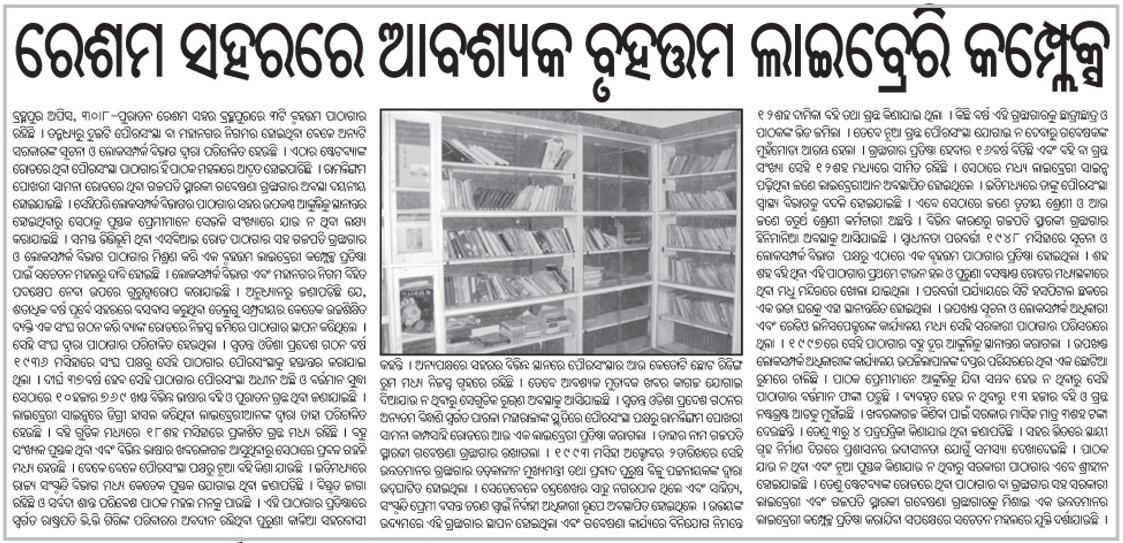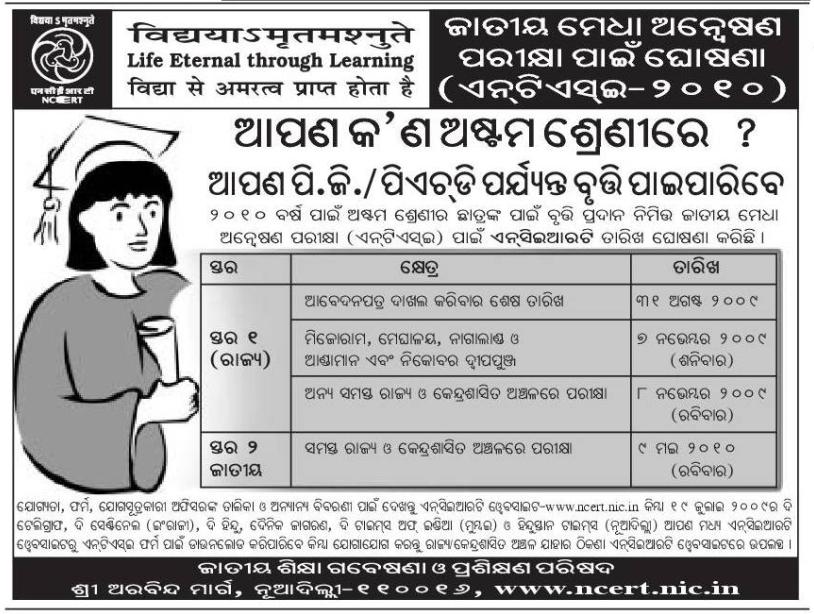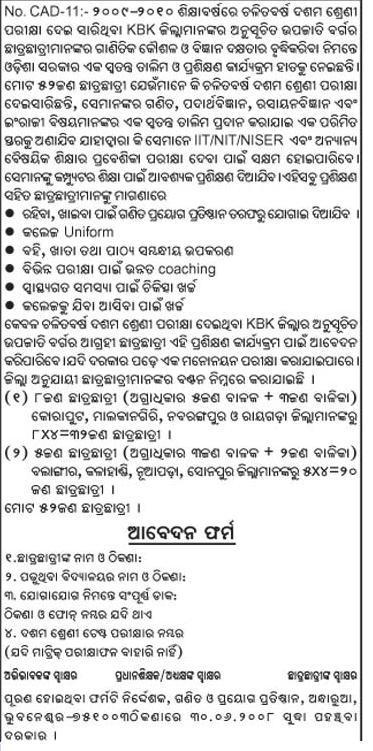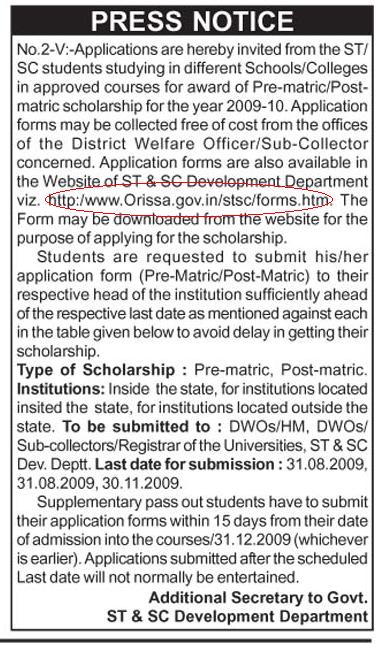Following is from Dharitri:
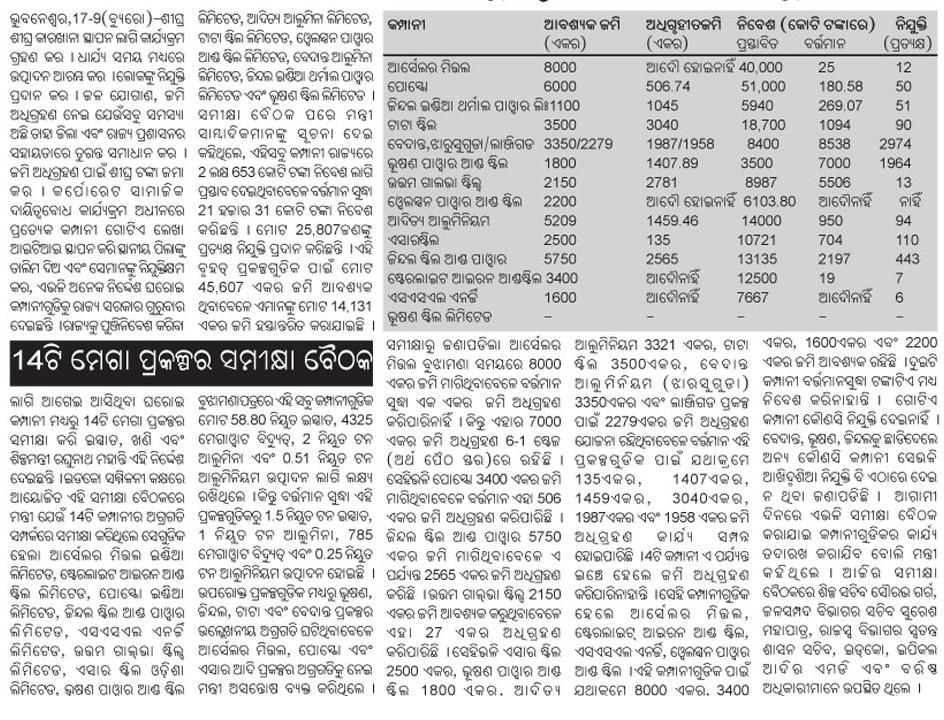
Today Pioneer reports on MP Bhakta Das’s demand to Vedanta with respect to Lanjigarh. Following is an excerpt from that report.
Das said the package should include direct employment of 5,000 locals in technical fields and indirect employment of 10,000 locals in non-technical fields, establishment of five technical colleges like medical, engineering, polytechnic and ITI and five central schools in the district.
Asked whether he would consider supporting extraction of bauxite in the Niyamgiri hill if VAL declares such a package, Das replied that a decision in this regard would be taken with consent of all citizens at a meeting where the industry would sign an agreement before the public.
Development of healthcare, roads, education and irrigation, connection of electricity to all villages, social activities, plantation, peripheral development and permanent income source for displaced people and tribals with lifetime free education to their children are also part of the package, he said. The industry would ensure that the flow of waters of rivers and streams in the Niyamgiri hill would not be affected. Consent of the tribals would have to be taken before handing over the hill, he said.
This is a constructive approach. I hope Vedanta agrees to it. (Although Vedanta’s Chairman is establishing a Rs 15,000 crore Vedanta University near Puri, with Rs 5000 crore of his own money, Vedanta should also pay attention to the localities where its industries are coming up and where its mining operations are located; in particular Lanjigarh and Jharsuguda; as those areas will bear the burnt of the pollution and environmental side effects and also many people there will be losing their lands.)
Following the above table the companies behind the other mega-projects should do the same. We list them here.
- Arcelor Mittal @ Keonjhar:
- POSCO @ Paradeep
- Jindal thermal @ Angul; Jindal Steel and Power @Kalinganagar
- Tata Steel, Kalinganagar
- Vedanta @ Jharsuguda and @ Lanjigarh; Sterlite Iron & Steel @Keonjhar
- Bhusan @ Kalinganagar
- Uttam Galva @Bistapal, Keonjhar
- Wellspun @Bhadrakh
- Aditya Aluminum @Rayagada @Sambalpur
- Essar Steel @Paradeep
- Essel Energy
To be continued …
September 19th, 2009
The duration of the 11th plan is from 2007-2012. We are now in 2009 and very soon 2012 will be looming. My guess is that the planning commission may already be in its preparatory stage to start planning for 2012. Considering that one of the big focus of this government is to increase the GER (gross enrollment ratio) in higher education from 12.4% to 30% by 2020, the 12th plan will also pay significant attention to higher education. The national knowlede commission has also recommended that India have up to 50 national universities and 1500 universities. With that in mind, following is part of something that I wrote to Prof. Yash Pal (and copied to to Sam Pitroda) in June as a response to Prof. Yash Pal’s draft. (Prof Yash Pal replied back saying: "I thank you for your excellent and concerned suggestions. I have shared them with some of my colleagues. I am sure they would be taken up by some of them. Our report will be submitted in a week. Then will start another phase. Many of these will keep reverberating. Thank you again.")
ii) Regional Universities with 50-50 split between state and the center:
The Central government now has central universities and is proposing 14 national universities. In these universities the students are and will be from across the country and the universities will be funded 100% by the central government, except land being given by the state.
As you have noted some of the centrally managed universities and institutes (IITs, etc.) have a good structure and are doing the best.
As a way to transfer this first-hand to the states I propose the establishment of “Regional Universities” which are funded 50-50 by the state and the center and the students are 50-50 between the state and the rest of the country. This will be similar to the structure of the erstwhile “Regional Engineering Colleges (RECs)”, which have now been transformed to NITs. The original RECs were funded 50-50 by the state and center and had 50-50 students from the state and the rest of the country. The NITs are funded 100% by the center.
Eventually the regional universities may be funded 100% by the center. This idea has many benefits:
(a) The direct collaboration between a state and the center helps in the transfer of know-how of how to develop and manage a good university.
(b) It costs less for the center to create another 30-40 good universities, as the cost is shared 50-50.
(c) It helps develop additional knowledge centers in the states. (Most RECs were established in second rung cities in their respective states. REC/NIT in Orissa is in Rourkela, in Tamil Nadu it is in Trichy, in Maharashtra it is in Nagpur, in Karnataka it is in Surathkal, in West Bengal it is in Durgapur, etc.)
I think this is something feasible and should be pushed with the planning commission. Even with the new central universities and national universities many states have large metropolitan areas that did not get one and are in need of a good (at least partially) centrally funded institution and university. That gap can be filled with the above proposed regional universities. In Orissa possible location of such a regional university could be Rourkela or Jharsuguda.
The proposed national universities also had stringent criteria attached to them, which made it difficult to distribute them. For example, the PIB announcing them said:
As regards 14 Central Universities aiming at world class standards, it has been considered necessary that these are located in or near selected large cities which would automatically have the kind of connectivity and infrastructure which such universities would need.
Earlier reports mentioned prime locations being an important factor and gave an example criteria of what they meant by a prime location. They cited proximity to CSIR labs.
Like the erstwhile RECs, the proposed regional universities need not have such stringent conditions allowing them to be located in places like Durgapur, Kadapa, Rourkela, Jharsuguda, etc.
Another item that I had in my mail to Prof. Yash Pal, which should be pushed for the 12th plan is as follows:
(vi) University and local communities; National and regional libraries:
I think a good library should be an integral component of each of the universities. Currently the libraries in most universities and colleges in India are pathetic. While the libraries are improved it should also mandate that a big part of the library materials, should be available for browsing for common folks who are not necessarily enrolled in the university. In the US any one can walk into a university library, be it Berkeley (a state university) or Stanford (a private university). I am not sure if that is the case with respect to the universities and colleges in India.
While we are discussing libraries, like central universities and national universities, the Indian government should establish a national library in each state capital (100% funded by the central govt.), and a regional library (funded 50-50 by the state and the central govt.) in another city of a state. In 5-10 years there should be good libraries in each district and in 10-15 years in each block. (When I walk into the local library in the US, I envy not growing up in the US and recall having to beg my local book store in a cabin near my house in Bhubaneswar to lend me translations of the world literature book series. I could not afford to buy them. Nor did my school have them.)
A new item that I have mentioned once in a while and that can be genarlized for the 12th plan is to establish centrally funded rural technological institutes like SLIET (Sant Longowal Institute of Engineering and Technology) in Punjab and the recently proposed ABA Ghani Khan Choudhary Institute of Engineering and Technology in West Bengal, in each of the other major states of the country. In Orissa, Balangir and Kalahandi (Bhawanipatna) are good possible locations for this. (Orissa should aim for having a centrally funded institute in each of the undivided KBK+Kandhamal districts.) Although centrally funded, these institutes are different from the NITs. The PIB release in the context of ABA GKC IET says the following:
The Institution will offer courses in Engineering and Technology to cater to the various manpower requirements of the region, with special emphasis on courses relevant to the local population such as in food technology & sericulture.
Initially, the Institution would start with Certificate level courses leading to Diploma, Degree and Post-graduate levels later.
The total project outlay of the Institute will be around Rs. 97 crores.
Dear Readers: Please suggest your thoughts and ideas on the 12th plan. Even if your main interest is about your home town, think of a way to put it in national terms.
September 14th, 2009
Following is an excerpt based on a report in The New Indian Express:
Academic faculty within institutions have proved to be a big hurdle in ushering in changes in the research universities in India, charged Indian Institute of Science (IISc) Director Prof P Balaram .
Speaking at the Indian Institute of Astrophysics here on Tuesday, he said, “What we have found is that opposition to reform comes from academic faculty members within the institute, who are more comfortable maintaining the status quo.”
Prof Balaram pointed that in the ranking of world universities by the Shanghai Jiao Tong University, IISc was the best performing Indian university ranking between 300 and 350.
He also pointed that in 2003 the institute’s ranking was between 251 and 300. “So does this mean that our institute is going down, or that other institutes are going up, or that we are going up slower than other institutes,” he asked.
On steps to improve research in Indian universities, he said that academic faculty members must be open to the idea of change. Besides this, institutes need to get their administrative structure sorted out. “Right now, we are at a stage where there is a lot of interest from the political class to strengthen the higher education system,” he said.
Prof Balaram also said that ideal universities must include teaching along with research, both at the undergraduate and post-graduate level.
“Teaching and research are two sides of the same coin. Unfortunately, today universities have restricted themselves to teaching just post-graduate courses,” he said. Prof Balaram also lamented at the fragmentation of disciplines at traditional universities.
“In Karnataka for instance, we now have a specialised university for law, engineering, medicine, Ayurveda, and music. The traditional university is now restricted to just basic sciences and humanities, essentially leaving it to be ignored,” he lamented.
September 3rd, 2009
This was part of a package that the state government had announced after the Kandhamal events.
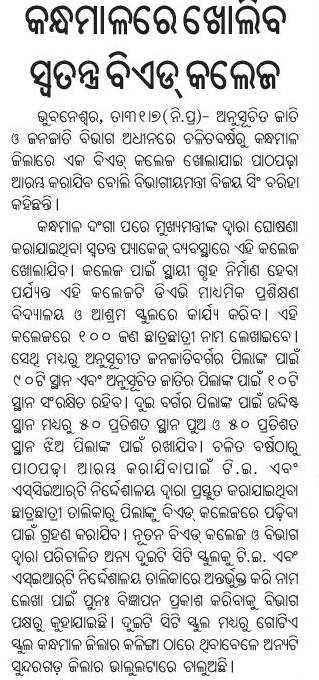
August 2nd, 2009
Tathya.in (see also Pioneer) reports that XIMB (Xavier Institute of Management, Bhubaneswar) is contemplating to become or create a university so as to accommodate its expansion plans.
This is a great idea.
As of now, XIM B is the best ranked higher education institution in Orissa. 2008 Outlook ranking has it at number 8 among the management institutions in India and number 3 among the private management institutes (XLRI is number 1 privatre management school in that list ). The next best ranked institute from Orissa is NIT Rourkela which is often ranked in the early thirties among engineering colleges/institutions. The best it has been ranked is 18.
Besides XIMB, the Xavier brandname is well established in India and abroad. In India, XLRI Jamshedpur is higher ranked than XIMB and is a perennial top 10 among management institutions in India. Similarly, XISS (Xavier Institute of Social Sciences) Ranchi is also well thought off. In USA, there are three Xavier Universities: http://www.xavier.edu/ (Cincinnati), http://www.sxu.edu/ (Chicago), and http://www.xula.edu/ (Louisiana) and are all well regarded.
The Xavier institutions are Jesuit institutions and XIMB was established by the Jesuit Society of India. Besides the Xavier institutes the Jesuit society also established the many well known Loyolla colleges in India. In US, there are about 30 Jesuit universities including famous ones like Georgetown University and Boston College. See http://en.wikipedia.org/wiki/Association_of_Jesuit_Colleges_and_Universities for the list.
With such background and past history of establishing and running quality higher educational institutions, a Xavier University in Orissa, which will be the first such university in India, would be a coup for Orissa and the Orissa government should jump at it, expedite this proposal and provide all necessary support.
In this regard, it may be noted that while the Sri Sri organization have a few higher education institutions, none of them appear in any ranking. In case of Vedanta University, they do not have a past track record. They do have very good people, plans and consulting agencies associated with it and one can imagine that they will be top notch.
But in case of Xavier there is no need of any imagination. With XIMB and XLRI they have proven themselves in India and with the Xavier Universities in the US and with Gerorgetwon University they have proven themselves internationally. So this is a great opprtunity for Orissa, which it should not let slip out. Also, it should expedite the process so that the first Xavier University in India is in Orissa. XLRI has contemplated becoming a deemed university. Xavier University in Orissa should be established before that happens. The one that is first has a first-mover’s advantage and that advantage should not be squandered away.
July 25th, 2009
Following is from Samaja:
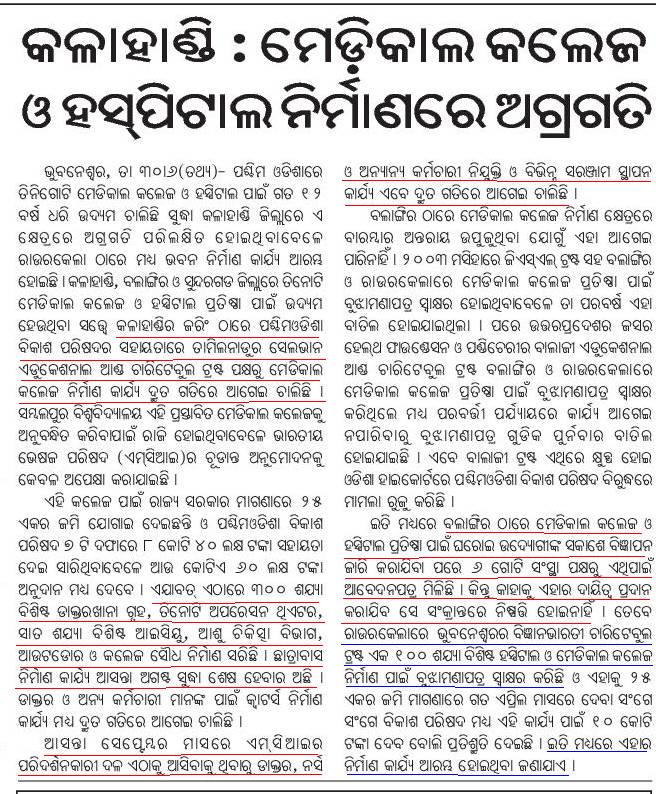
The summary of the status is:
- Bhawanipatna, Kalahandi: Good progress, MCI visitor scheduled to visit in September for inspection
- Balangir: Govt. has received 6 proposals after its last call. The proposals are from:
- Dr.D Meher Education & Health Trust, Balangir,
- Santhigiri Ashram, Kerala,
- Sahayata Trust, Hydrabad,
- supreme Task, New Delhi,
- Vigyan Bharati Charitable Trust , Bhubaneswar and
- RVS Educational Trust, Tamil Nadu.
- Rourkela: MOU signed with Bhubaneswar based Vigyan Bharati Charitable trust. (They also run the Hi-Tech Medical college in Bhubaneswar.) Construction has started.
July 1st, 2009
Update: UP to have grading system in class 10 boards; Govt. for single board at all-India level for school education; Govt. plans independent panel to rate schools
Different media sources report on the idea of central govt. to reform school education system in India. Following is an excerpt from CNN-IBN:
Union Human Resource Development Minister Kapil Sibal has come up with a innovative idea to reform school education system and is planning to scrap the Class 10 board examination. Sibal not only wants to do away with Class 10 board examination but also set up an evaluation system based on percentiles.
"We need to de-traumatise it and reduce the burden on parents and children. We could, for instance, think of abolishing the Class 10 board exam. Why does a child need to appear for a board exam in Class 10 if he or she is continuing in the same school?" asked Sibal.
"I think we should not let the students and their parents go through this immense trauma at a such young age. I will be taking forward this proposal and will be discussing it with the state broads too. We already have NCERT recommendations on it and this not new. Many countries don’t have exams but have a different form of assessment. For Class 12, it is different. We need to have exams because the students will be going into graduate colleges, but for Class 10, why should we have percentages when we can have percentile," he added.
Sibal also said it this ministry will do its best to implement the Yash Pal Committee report within 100 days. The Committee headed by Professor Yash Pal had been set up to advise on Renovation and Rejuvenation of Higher Education and has recommended the establishment of a National Commission for Higher Education and Research (NCHER).
June 25th, 2009
Following is from http://www.cse.iitd.ernet.in/~jalote/misc/phd_surveyIITK-D-B.pdf linked from Prof. Pankaj Jalote’s home page at IIT Delhi.
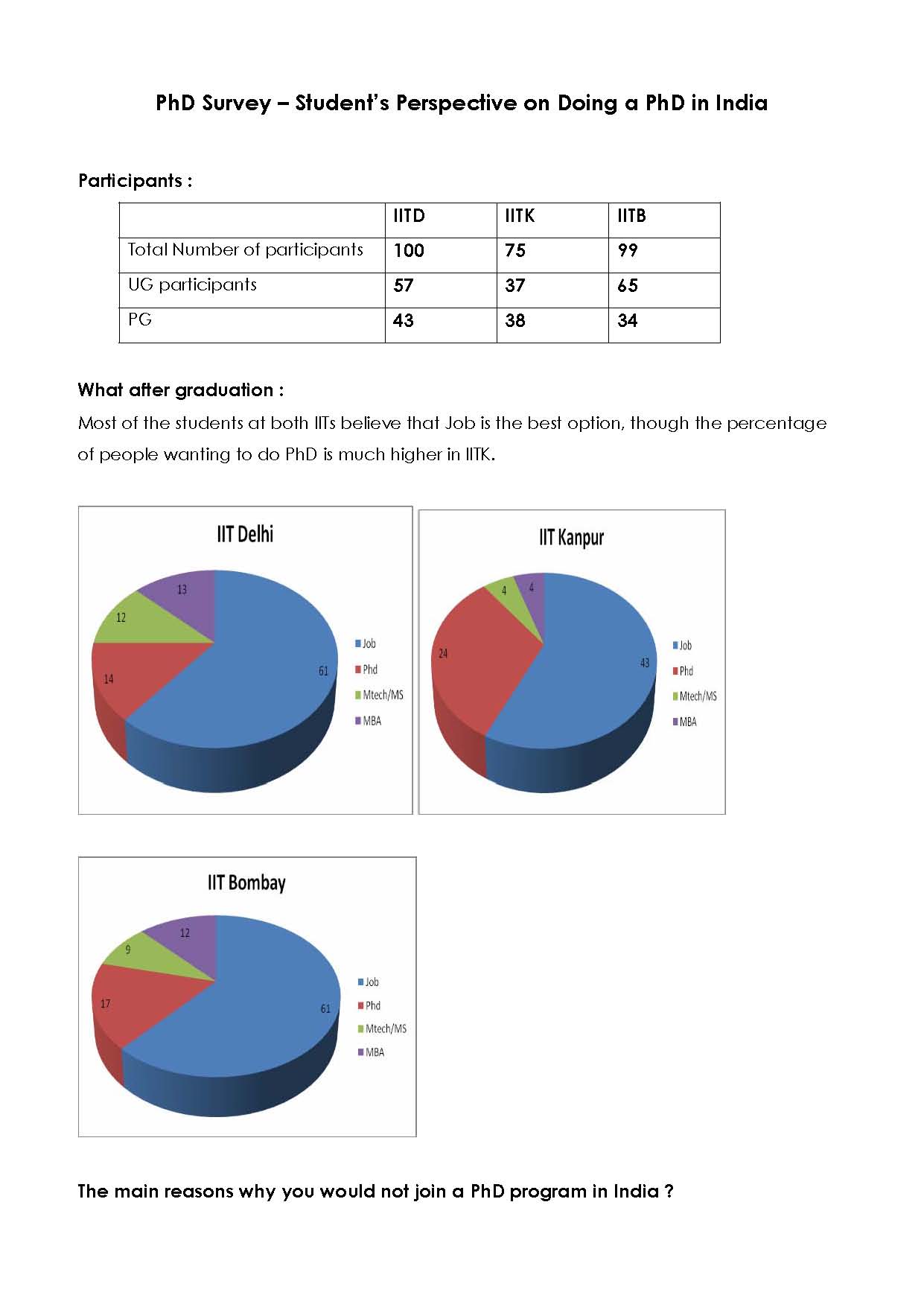
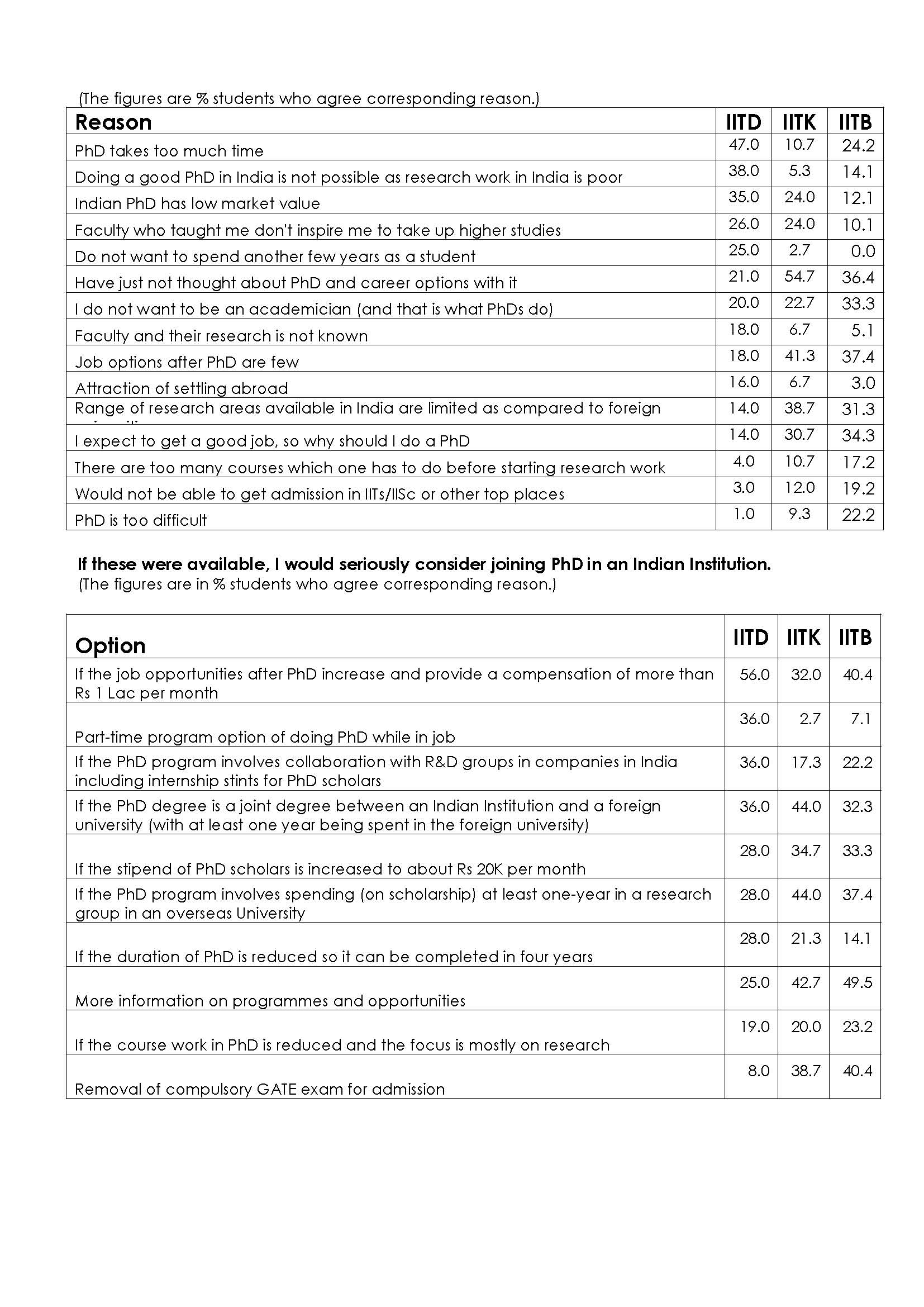
Based on the above survey, a simple way to build a private top quality university in India is to pay more than twice the amount that is paid to faculty at IITs/IISERs/NISER (starting with 100K/month to assistant professors) and to pay Rs 40K/month to Ph.D students. These Ph.D students may be asked to help in teaching as teaching assistants in US universities do. That way many top undergraduates will pursue Ph.D in this institute and by paying more than twice to the faculty the institution can attract top faculty. This could be a a data point for Vedanta University.
June 12th, 2009
This institute is established by Ministry of Tourism Government of India and Government of Orissa. This is the only centrally funded institute in the Balangir district.

May 28th, 2009
Update: Hindu also reports on it. In regards to the location of the permanent campus, Hindu says the following:
While speaking very high about the proposed location for establishing the university which is situated between the railway station at Koraput and Danagadeola village over an area of 565 acres of government land she said that over the next five years the university could become one of the major attractions even for the tourists for its unique green campus resembling that of many world class university campuses in the other parts of the globe.
Following is an excerpt from a report in the Pioneer.
Vice-Chancellor of the Central University, Orissa, Dr Surabhi Banerjee informed that the classes in the university at Koraput would start from August this year. The university would function temporarily at the COATS (Council of Analytical Tribal Studies) and the courses would start from under-graduation to higher studies, she said.
…, the VC visited Deola village where the proposed university will be set up over 575 acres of land. … She thanked the district administration to locate such a suitable land and … After visit of the representatives from the Ministry of Human Resource Development, the construction work would be carried out on their approval, she said.
There will be an entrance test for taking admission into the university and the entrance test would be conducted in around 15-16 centres all over India and for Orissa in Koraput, Bhubaneswar and Sambalpur. Subjects like English, Oriya, Social Sciences, Anthropology, Tribal Studies and Journalism and Mass Communication would be taught in the university, besides other higher and professional courses. Different kinds of schools will be opened on the campus like the Jawaharlal Nehru University and the head office of the university would function at Koraput and the transit office to recruit lecturers, readers, professors, management and other staff will function at Bhubaneswar, the VC informed.
The Central Government has approved the university for five years for the time being and the classes would start in the COATS which is being managed by Sabara Srikshetra Jagannath Mandir Management Committee and the existing Gyan Mandir, library and tribal museum are an added advantage for the students of the university, she said.
Among others, Registrar BK Mishra, Financial Advisor P Pati and Liaisoning Officer and Coordinator Ganesh Chandra Roul attended the Press conference.
May 25th, 2009

